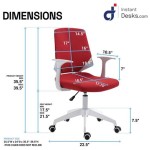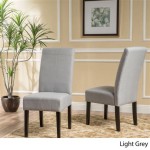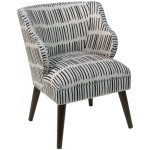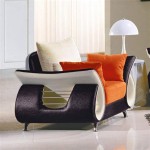Dining Room Chairs Built to Last: A Guide for Heavy Individuals
Selecting dining room chairs involves more than just aesthetic appeal. For individuals requiring chairs with greater weight capacity, durability, and comfort become paramount considerations. This article delves into the specific factors to consider when purchasing dining room chairs designed to accommodate heavier individuals, ensuring both safety and long-term satisfaction.
The standard dining room chair often lacks the structural integrity required to support significant weight consistently. Over time, this can lead to wobbling, breakage, and an overall decrease in the chair's lifespan. Investing in chairs specifically designed for higher weight capacities minimizes these risks and provides a comfortable and secure seating experience.
Understanding Weight Capacity and Chair Construction
Weight capacity is the most crucial factor to consider. Dining chairs marketed for general use typically have a weight capacity between 250 and 300 pounds. Individuals exceeding this weight range should seek out chairs specifically labeled as "heavy-duty" or "bariatric," which often boast weight capacities of 300 pounds or more, sometimes reaching 500 pounds or even higher. Always verify the manufacturer's specified weight limit and choose a chair that exceeds the individual's weight to provide a safety margin.
The chair's construction materials are directly related to its weight-bearing capabilities. Solid wood frames, particularly those constructed from hardwood such as oak, maple, or beech, offer superior strength and stability compared to softer woods or composite materials. Metal frames, especially those made of steel, are also an excellent choice for high weight capacities, offering exceptional durability and resistance to bending or breaking. Tubular steel frames should be adequately thick-walled to withstand the applied load. Check for welds of good quality for metal frame to ensure the joints are solid.
Beyond the frame, the joints and connections within the chair's structure are critical. High-quality joinery techniques, such as mortise-and-tenon joints (for wood frames) or reinforced welding (for metal frames), contribute significantly to the chair's overall strength and resistance to stress. Avoid chairs with flimsy joints or those held together solely by screws, as these are more prone to failure under significant weight. Look for evidence of robust construction and reinforced stress points.
The seat itself requires careful consideration. Solid wood seats offer inherent strength, while upholstered seats should feature a robust inner support structure, such as a grid of metal springs or interwoven webbing, to distribute weight evenly. The upholstery fabric should also be durable and resistant to tearing or stretching under pressure. High-density foam padding provides both comfort and support, preventing the seat from compressing excessively over time.
Ergonomics and Comfort Considerations
While weight capacity is paramount, comfort is equally important for an enjoyable dining experience. Ergonomic design plays a significant role in ensuring comfort and minimizing strain, particularly for individuals who may spend extended periods seated.
Seat height is a crucial factor. The standard dining chair seat height is approximately 18 inches, but this may not be suitable for everyone. Taller individuals may require a chair with a slightly higher seat to avoid knee discomfort or excessive pressure on the thighs. Conversely, shorter individuals may benefit from a lower seat height to allow their feet to rest comfortably on the floor, providing stability and reducing pressure on the lower back. Adjustable-height chairs offer the most flexibility but are less common in dining room settings.
Seat width and depth are also essential. A wider seat provides more room for movement and prevents the feeling of being confined. Similarly, adequate seat depth ensures that the entire thigh is supported, reducing pressure points. A seat that is too shallow can lead to discomfort and poor posture.
Back support is another critical element of ergonomic design. A chair with adequate lumbar support helps maintain the natural curvature of the spine, reducing strain on the lower back. Some chairs feature contoured backrests or built-in lumbar support to enhance comfort. The height of the backrest should also be considered, as a taller backrest provides more comprehensive support for the upper back and shoulders. Backrests that extend high enough to provide head support can be particularly beneficial for individuals with neck pain.
Consider the armrests of the chair. While not essential, armrests can provide additional support and comfort, particularly for individuals with mobility issues. Armrests should be positioned at a comfortable height and width to avoid straining the shoulders or elbows. Avoid chairs with sharp edges on the armrests. Upholstered armrests provide a softer, more comfortable surface.
Exploring Style and Aesthetics
While functionality and durability are key considerations, aesthetics also play a significant role in the dining room's overall ambiance. Fortunately, heavy-duty dining chairs are available in a wide range of styles and finishes to complement various decorating schemes.
Consider the overall style of the dining room. Is it traditional, modern, contemporary, or eclectic? Choose chairs that complement the existing furniture and décor. For a traditional dining room, chairs with classic designs, such as Windsor chairs or chairs with carved details, may be appropriate. For a modern dining room, opt for chairs with clean lines, minimalist designs, and contemporary materials. Consider the legs style too. Straight legs may contribute to more solid look.
The chair's finish should also complement the dining table and other furnishings. Wood chairs can be stained in a variety of colors, from light oak to dark mahogany. Metal chairs can be powder-coated in various colors or feature a brushed or polished finish. Choose a finish that harmonizes with the overall color palette of the dining room.
Upholstery fabrics offer another opportunity to express personal style. Choose a fabric that is both durable and aesthetically pleasing. Leather or faux leather is a popular choice for its durability and sophisticated look, while fabric upholstery offers a wider range of colors and patterns. Consider the pattern and texture of the fabric to ensure it complements the overall design of the dining room. Dark colors often hide stains and wear better than lighter colors.
Consider the size and scale of the chairs in relation to the dining table and the overall room size. Oversized chairs can overwhelm a small dining room, while undersized chairs may look out of place in a larger space. Maintain a sense of proportion and balance to create a visually appealing and comfortable dining environment.
Finally, consider the maintenance requirements of the chairs. Some materials, such as leather and certain fabrics, require more care and cleaning than others. Choose chairs that are easy to clean and maintain to ensure their longevity and appearance.
By carefully considering weight capacity, construction, ergonomics, and aesthetics, individuals can select dining room chairs that provide both safety and comfort, enhancing the dining experience for years to come.

Heavy Duty Restaurant Chairs Commercial

Dining Chair Styles Guide Types Chart

Coastal Dining Room Black Chairs The Lilypad Cottage

How To Mix And Match Dining Chairs In A Coastal Modern Style

Dining Room Furniture Luxury Sets Ethan Allen

Modern Dining Room Kitchen Furniture Board

Coastal Dining Room Black Chairs The Lilypad Cottage

How To Mix And Match Dining Chairs In A Coastal Modern Style

Dining Room Sets Collections

Modern Traditional Dining Room Decor Reveal Create Eoy








